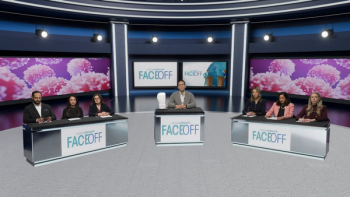
Managing Oral and Dermatologic Adverse Effects in Multiple Myeloma
Samantha Shenoy, NP, MSN, discussed common oral and dermatologic adverse effects associated with talquetamab in patients with myeloma.
Dryness in the skin and mouth and taste changes resulting from talquetamab-tgvs (Talvey) can affect quality of life for patients with multiple myeloma, according to Samantha Shenoy, NP, MSN.
CancerNetwork® spoke with Shenoy, a nurse practitioner at the Cancer Immunotherapy Clinic of University of California San Francisco Health, about common adverse effects (AEs) associated with talquetamab and how they are managed at her clinic.
Shenoy began by identifying 2 distinct categories for talquetamab-related AEs: oral and dermatologic. In terms of oral AEs, Shenoy explained that patients can experience taste changes, dry mouth, and mouth soreness. Subsequently, she touched upon dermatologic effects, which included skin rashes, palmar-plantar desquamation, and onychomadesis, the last of which can be challenging for patients.
Shenoy then stated that skin toxicities were manageable before describing how taste changes present the most impactful challenges to quality of life in patients undergoing treatment with talquetamab. Shenoy explained that taste changes affect patients in a variety of ways and is a relatively long-term condition to manage. To conclude, Shenoy highlighted the impact of dry mouth for patients, illustrating that patients can lose sleep due to its severity.
Transcript:
Talquetamab [AEs can be] branched into 2 categories: oral and dermatologic. In terms of oral [AEs], there are taste changes, dry mouth, and sometimes difficulty swallowing. Also, patients will complain, especially in the first cycle, that their mouth is sore, and so things like spicy food or citrus can irritate it. In terms of dermatologic [AEs], some of the main things we can see are skin rashes—usually that is in the first cycle—and palmar-plantar desquamation. [There] can be extreme peeling of the palms of the hands and the soles of the feet. Then [there are] nail changes. Patients can have nail ridging—most patients’ nails do fall off at some point. There can be separation of the nail plate from the nail bed—onychomadesis—where you can imagine if your nail is starting to separate as you are trying to comb your hair or wearing a wool sweater, your nails are getting caught on that. That can be challenging for patients as well.
Those are the main [AEs] that [come to mind] with talquetamab. The skin toxicities are manageable; I forgot to mention dry skin. Of all those [AEs], the ones that are the most challenging in terms of quality of life are the taste changes. It is a broad spectrum. Some patients completely lose their taste. Some patients can only taste sweet things, or for some patients, everything tastes bitter or salty. It is challenging, and it can last for several weeks. I mentioned dry mouth as well. That can be a big one that people do not always talk about, but that can be difficult for patients, especially at night when they are trying to sleep. I have had patients who have had trouble sleeping because their mouth is so dry.
Newsletter
Stay up to date on recent advances in the multidisciplinary approach to cancer.




















































































